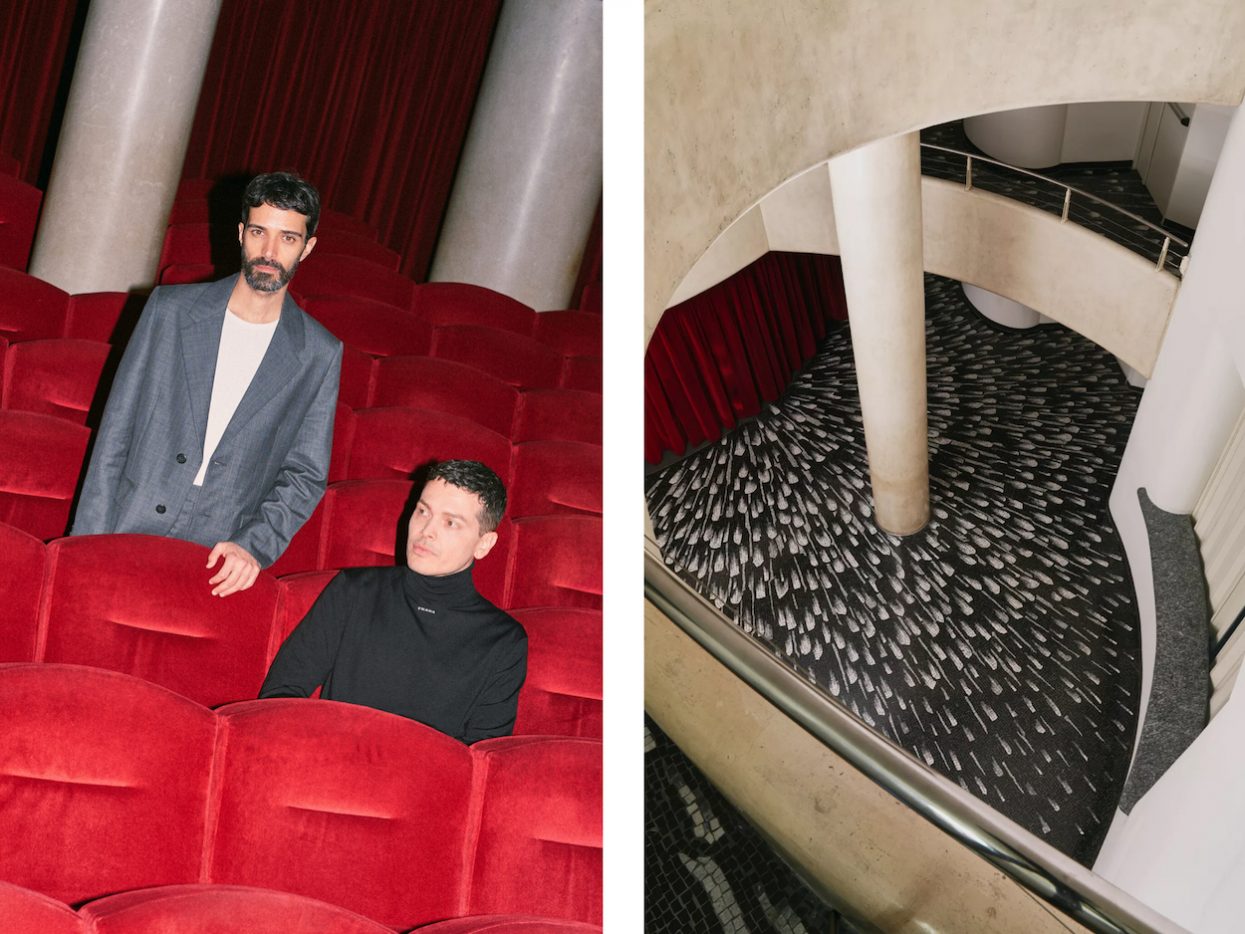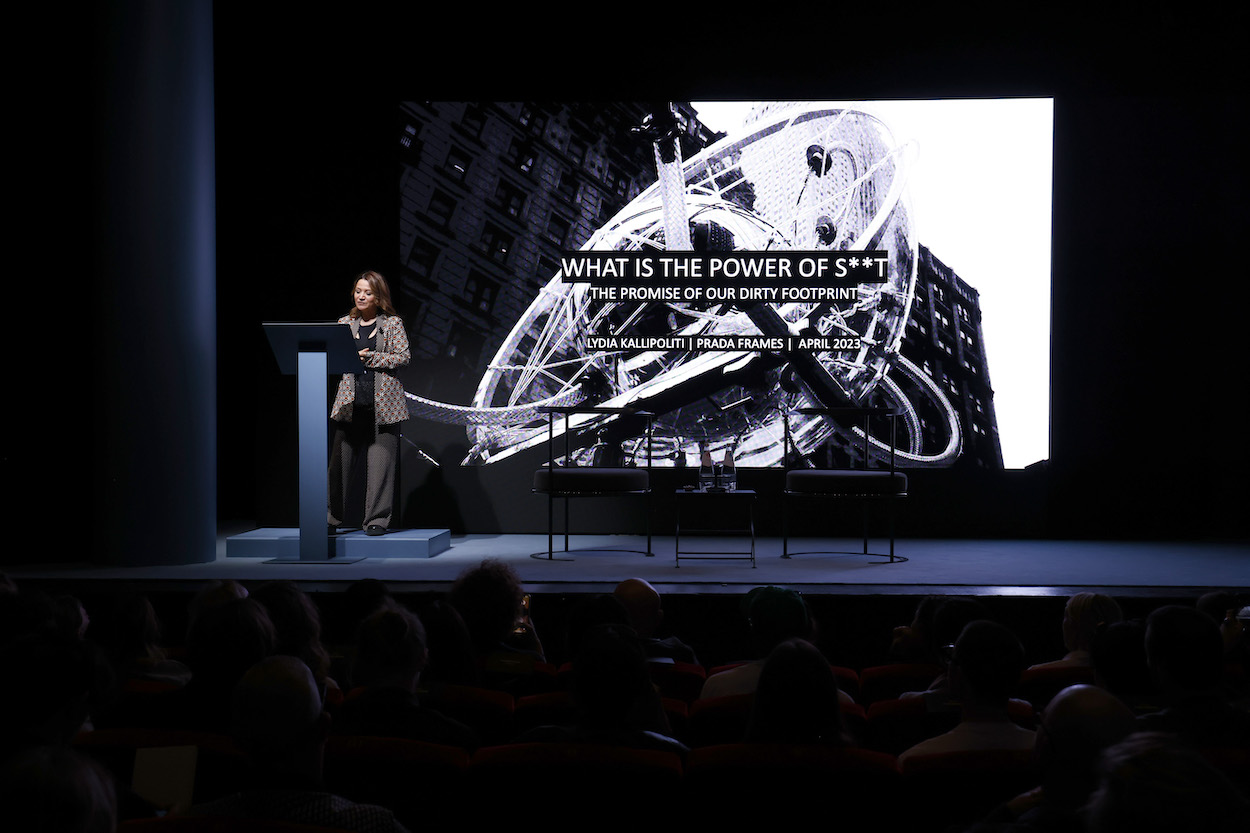A fair distance from the hubbub of Salone and Fuorisalone but steps from La Scala and Piazza Duomo, the grand 1798 Teatro Filodrammatici di Milano became home to the latest Prada Frames multidisciplinary symposium during Milan Design Week. This spring’s theme, curated by Formafantasma, was Materials in Flux, a fitting topic for a building that has morphed over the centuries, including the addition of an Art Nouveau facade and, in the 1960s, a buzzy interior redesign by architect Luigi Caccia Dominioni utilizing his ‘40s-era furniture and lighting for Azucena.
For Prada Frames (April 17–19) rotating groups of speakers took the stage to elaborate and complicate British anthropologist Tim Ingold’s research into phenomenological anthropology. Monday saw Hans Ulrich Obrist, academic and filmmaker Elizabeth Povinelli, and others exploring the social underpinnings of waste management. On Wednesday, materials scientist Veena Sahajwalla explored how we categorize what’s “unwanted” while architect Mark Wigley unpacked the local politics of electronic waste.
But the most provocative panels were on Tuesday. After an exploration of design and ecosystems by Paola Antonelli, the architect and engineer Lydia Kallipoliti gave a fascinating lecture on what she called the power of shit. “In many ways, shit forces us to look at questions of ecology viscerally, via the raw ecologies of our bodies and the understanding that recycling is not just a statistical problem that we can relate to the management of urban resources, but also a basic bodily reality that affects the water we drink and the air we breathe,” she says.
One example is the vast quantities of waste, human and otherwise, shipped from New York City to majority Black communities in Alabama, which connects the reality of shit to the reality of environmental racism. “Integrating the body’s dirty physiology, or what I call the dirty footprint in the ecology of habitation,” she says, “can potentially reveal alternative scenarios for handling waste as a resource in the future of urban environments.” Shit happens, in other words; it’s one of the few constants of life. We might as well make the most of it.

